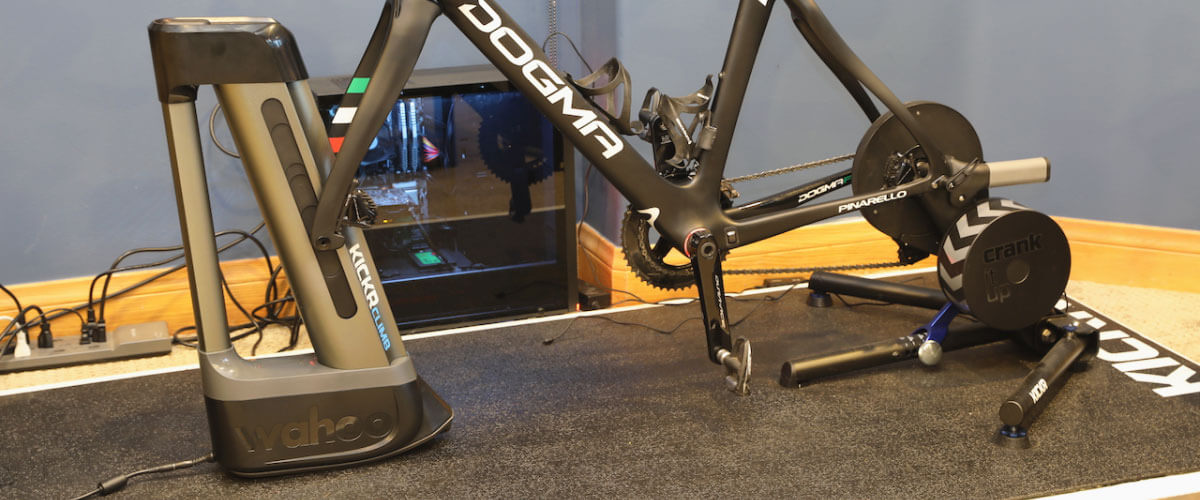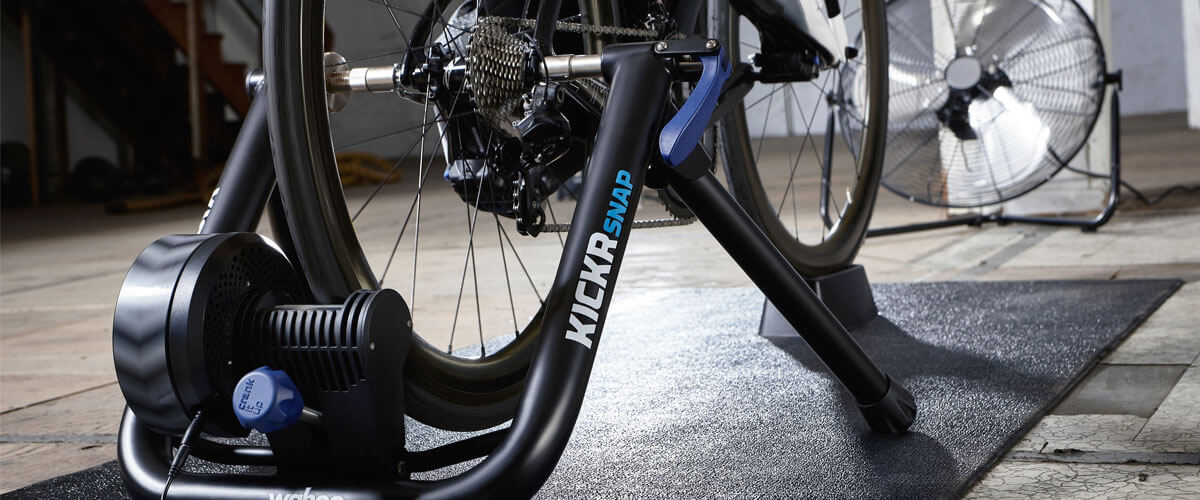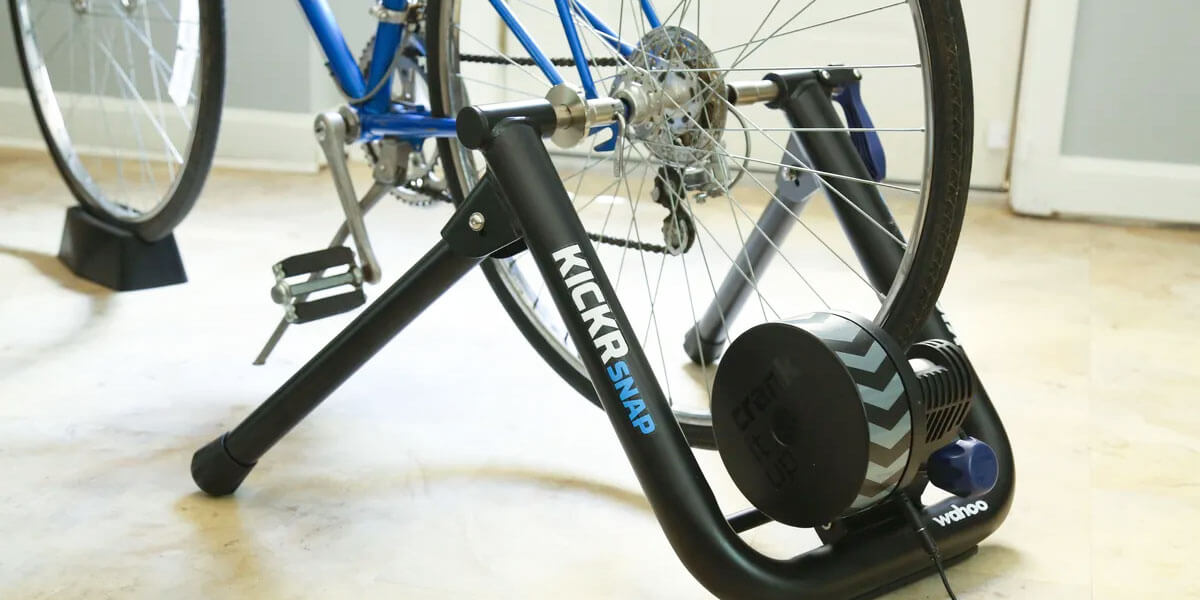Whether you’re an avid cyclist seeking a way to continue training during inclement weather or someone looking to add variety to their fitness routine, learning how to make your bike stationary opens up a world of possibilities. Do you want to bring your bike indoors and turn it into a stationary bike? If so, you’ve come to the right place. In this article, I will share the process of making your bike stationary, allowing you to engage in indoor cycling workouts at your convenience.
Converting your bike into a stationary setup

Equipment needed
To make a DIY stationary bike, you will need a few key pieces of equipment. The first essential item is a bike trainer or stationary stand, designed to hold your bike’s rear wheel off the ground, allowing it to function as a stationary exercise machine. This device provides resistance to simulate outdoor riding conditions and offers adjustable settings to tailor the intensity of your workouts.
Additionally, a front wheel block stand is recommended to level and stabilize the front part of your bike. This accessory helps maintain balance and ensures a secure and comfortable riding position throughout your indoor cycling sessions. With these essential equipment pieces, you can make your bike stationary, ready to deliver effective workouts in the comfort of your own home.
Preparation and safety
To ensure a safe and effective indoor cycling workout, follow these steps:
- Choose a suitable location: Find a spot in your home that offers enough space for your bike and allows unrestricted movement during your training sessions.
- Clear the area: Remove any obstacles or potential hazards that could interfere with your workouts. Create a clutter-free zone to ensure your safety.
- Ensure proper ventilation: Make sure the area is well-ventilated to prevent overheating and maintain a comfortable environment during your workout. Good airflow can enhance your overall experience.
- Perform bike maintenance: Before starting your stationary cycling routine, check your bike for any necessary maintenance or adjustments. Inspect the tires, brakes, and gears to ensure they are in good working condition.
- Secure your bike: Ensure that your bike is securely attached to the stationary stand or trainer. This will prevent any accidents or instability while you exercise.
Step-by-step instructions
Follow these step-by-step instructions to convert bike to stationary cycling:
| Step | Action | Description |
|---|---|---|
| 1 | Adjust the trainer or stand | Refer to the manufacturer’s instructions to assemble and adjust the trainer or stand according to your bike’s specifications. Follow the provided guidelines to ensure a proper fit. |
| 2 | Prepare your bike | Remove any accessories that may interfere with the setup, such as bike bags or water bottle holders. Ensure that your bike is clean and in good working condition before proceeding. |
| 3 | Attach your bike to the trainer or stand | Carefully place your bike onto the trainer or stand, aligning the rear wheel with the roller or clamp mechanism. Securely fasten the bike in place as per the provided instructions, ensuring stability and a secure attachment. |
| 4 | Stabilize the front wheel | Position the front wheel of your bike onto a front wheel block stand to level and stabilize the bike during your workouts. This will help maintain balance and provide a more comfortable riding position. |
| 5 | Double-check the setup | Before starting your workout, double-check that your bike is securely attached, stable, and correctly positioned on the trainer or stand. Ensure that all adjustments are properly tightened and that the bike is in a safe and ready-to-use state. |
Benefits of indoor cycling

I can assure you that indoor cycling offers several benefits that make it a popular choice for fitness enthusiasts. It provides a comfortable and controlled environment for workouts, regardless of weather conditions. Some advantages of indoor cycling include cardiovascular health, leg strength development, calorie burning, and low-impact exercises that are gentle on the joints. Whether you’re looking to improve your fitness, lose weight, or enhance your overall well-being, turning a bike into an exercise bike can be an excellent option to achieve your goals while enjoying a safe and effective workout.
Safety and precautions
- Equipment safety: Regularly inspect your bike, trainer, or stand and any accompanying accessories for wear and tear. Replace any damaged or worn-out parts promptly. Ensure that the bike is securely attached to the trainer or stand and that all clamps and fasteners are properly tightened. Double-check that the front wheel is stabilized using a wheel block to maintain stability during workouts.
- Personal safety: Don’t forget to dress appropriately for indoor cycling, wearing comfortable workout attire and supportive footwear. Use a sweat towel to wipe away perspiration to maintain a secure grip on the handlebars. Avoid dehydration by having a water bottle readily available during the workout.
- Warm-up and cool-down: Do dynamic stretches or a short, light ride to gradually warm up the muscles and prepare the body for exercise. I advise including a cool-down session at the end of each workout, gradually reducing the intensity, and incorporating static stretching to promote muscle recovery and flexibility.
FAQ
Is it necessary to use a specific type of bike for indoor cycling on a trainer or stand?
No, you can use various types of bikes for indoor cycling. Most trainers and stands are designed to accommodate common bike types, including road bikes, mountain bikes, and hybrid bikes. However, it’s important to ensure that your bike is compatible with the specific trainer or stand you plan to use.
Are there any weight restrictions or limitations for using a bike trainer or stand?
Yes, most bike trainers and stands have weight restrictions or limitations. The weight capacity can vary depending on the specific model and design.
Can I simulate outdoor riding conditions on a stationary bike setup?
Yes, many trainers offer resistance settings that allow you to simulate different outdoor riding conditions. Some trainers provide adjustable resistance levels or even advanced features like electronically controlled resistance that can simulate various terrains, such as flat roads or steep hills.
Can I track my workout metrics, such as speed, distance, and calories burned, while cycling indoors?
Yes, there are various ways to track your workout metrics during indoor cycling. Many trainers and stationary bikes have built-in consoles or display screens that provide real-time feedback on metrics like speed, distance, time, and calories burned.




